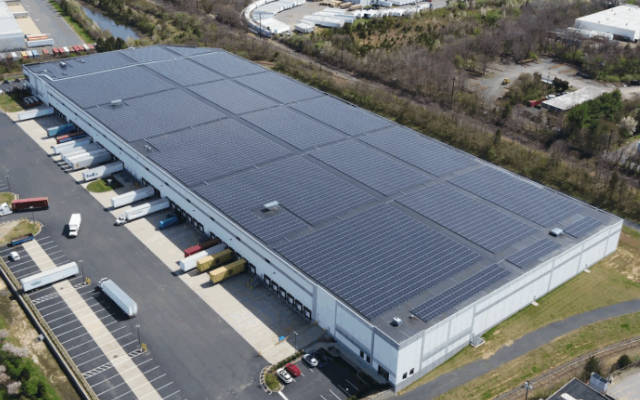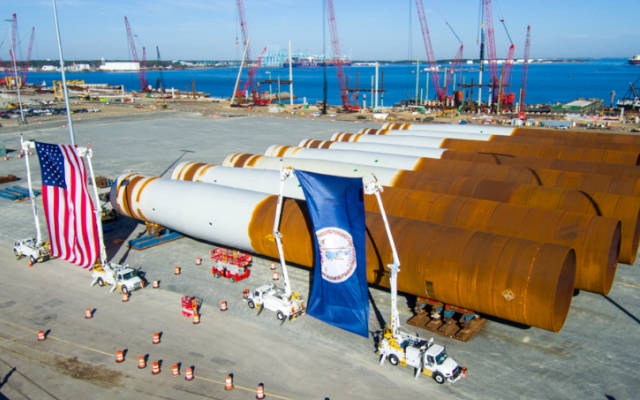 EDITOR'S PICK
EDITOR'S PICK
When Cars Go Electric: Understanding The Tipping Points Transforming Transportation
01 Aug 2025 | Synopsis
 "From less than 5% new EV sales around 2013, Norway rapidly crossed critical adoption thresholds, surpassing 15% by 2016, 50% by 2019, and reaching over 90% by 2025....Mainland Europe and China are following similar trajectories today
"From less than 5% new EV sales around 2013, Norway rapidly crossed critical adoption thresholds, surpassing 15% by 2016, 50% by 2019, and reaching over 90% by 2025....Mainland Europe and China are following similar trajectories today"...third theory, complex adaptive systems...describes how interconnected elements of a system react to changes, creating feedback loops that accelerate transformations."
The US Commercial Rooftop Solar Market Is About To Explode, Federal Tax Credits Or Not
31 Jul 2025 | Synopsis
 "...it's a mystery why federal policy makers are ignoring solar in favor of other, more cumbersome and expensive domestic energy resources...
"...it's a mystery why federal policy makers are ignoring solar in favor of other, more cumbersome and expensive domestic energy resources..."New subscription-style pay-as-you-go financing models have relieved property owners of that burden. Virtual power plants, the distributed energy resource trend, and the booming community solar movement are three additional factors supporting the commercial rooftop solar movement."
A Powerful Essay On Renewable Energy Reminds Us How Witheringly Stupid The US Has Become
31 Jul 2025 | Synopsis
 Environmental author and activist Bill McKibben’s recent essay highlights the rapid global rise of solar power—adding a terawatt every two years—and the potential of wind energy, contrasting it with current U.S. policies curbing renewables. He criticizes the administration's baseload bias and new Interior Department restrictions on wind and solar, warning that such moves squander a historic opportunity for domestic clean energy growth.
Environmental author and activist Bill McKibben’s recent essay highlights the rapid global rise of solar power—adding a terawatt every two years—and the potential of wind energy, contrasting it with current U.S. policies curbing renewables. He criticizes the administration's baseload bias and new Interior Department restrictions on wind and solar, warning that such moves squander a historic opportunity for domestic clean energy growth.Does America's Current Interior Secretary Know What a Battery Is?
31 Jul 2025 | Synopsis
 Interior Secretary Doug Burgum questioned the reliability of wind and solar, stating solar fails at night and dismissing batteries - as if they didn't exist. His comments came amid the administration’s plan to eliminate green energy tax credits and revoke preferential treatment for renewables. Critics pointed out the irony: under Burgum's previous tenure as North Dakota governor, wind and solar made up over 40% of that state’s electricity.
Interior Secretary Doug Burgum questioned the reliability of wind and solar, stating solar fails at night and dismissing batteries - as if they didn't exist. His comments came amid the administration’s plan to eliminate green energy tax credits and revoke preferential treatment for renewables. Critics pointed out the irony: under Burgum's previous tenure as North Dakota governor, wind and solar made up over 40% of that state’s electricity.Ford's "Model T Moment": What Jim Farley Is Signaling with a New EV Platform
31 Jul 2025 | Synopsis
 Ford CEO Jim Farley calls the upcoming August 11 debut of its next-gen EV platform a “Model T moment,” signaling a leap toward affordable, mass-market electric vehicles. Developed by a skunkworks team with ex-Tesla engineers, the flexible platform targets ~$25K pricing, U.S. production, and simplified manufacturing to compete with Chinese EVs and expand Ford’s reach beyond Mach-E and F-150 Lightning.
Ford CEO Jim Farley calls the upcoming August 11 debut of its next-gen EV platform a “Model T moment,” signaling a leap toward affordable, mass-market electric vehicles. Developed by a skunkworks team with ex-Tesla engineers, the flexible platform targets ~$25K pricing, U.S. production, and simplified manufacturing to compete with Chinese EVs and expand Ford’s reach beyond Mach-E and F-150 Lightning.
 Si Exclusive
Si Exclusive
Hydrogen's Flight Path: Fuel Cells, Turbines, and the Economics of Clean Aviation
10 Oct 2025 |  Aviation is shifting from Jet A to four fuel systems: electricity, hydrogen (fuel cell and combustion), SAF, and petroleum. Fuel cells suit short-haul aircraft; hydrogen combustion may power long-range jets. SAF bridges legacy fleets. Hydrogen costs - $5-$7/kg today, possibly $2/kg by 2040 - impact ticket prices and infrastructure decisions. Airport authorities, airlines, and governments will share deployment costs. Each fuel has distinct environmental pros and cons shaping aviation's net-zero future.
Aviation is shifting from Jet A to four fuel systems: electricity, hydrogen (fuel cell and combustion), SAF, and petroleum. Fuel cells suit short-haul aircraft; hydrogen combustion may power long-range jets. SAF bridges legacy fleets. Hydrogen costs - $5-$7/kg today, possibly $2/kg by 2040 - impact ticket prices and infrastructure decisions. Airport authorities, airlines, and governments will share deployment costs. Each fuel has distinct environmental pros and cons shaping aviation's net-zero future.
 10 Oct 2025 23:14:30 UTC |
RECENT PODCASTS
BYD Soars - Cheaper Tesla Models - The Bolt is Back - Rivian
SEARCH RSSTREAM
 53 New Postings In Past 24 Hours
53 New Postings In Past 24 Hours
Category:finance
Region:NoAmerica
Date:10 Oct 2025
Category:policy
Region:NoAmerica
Date:10 Oct 2025
Category:mobility
Region:AsiaPacific
Date:10 Oct 2025
Category:mobility
Region:AsiaPacific
Date:10 Oct 2025
Category:finance
Region:NoAmerica
Date:10 Oct 2025
Category:finance
Region:IndoAsia
Date:10 Oct 2025
Category:energy
Region:Global
Date:10 Oct 2025
Category:energy
Region:NoAmerica
Date:10 Oct 2025
Category:finance
Region:NoAmerica
Date:10 Oct 2025
Category:finance
Region:Global
Date:10 Oct 2025